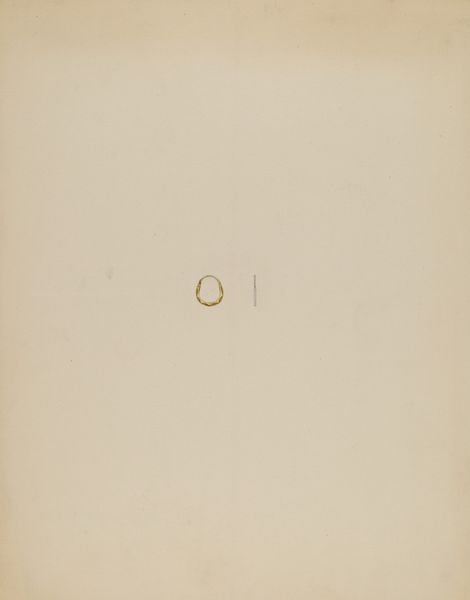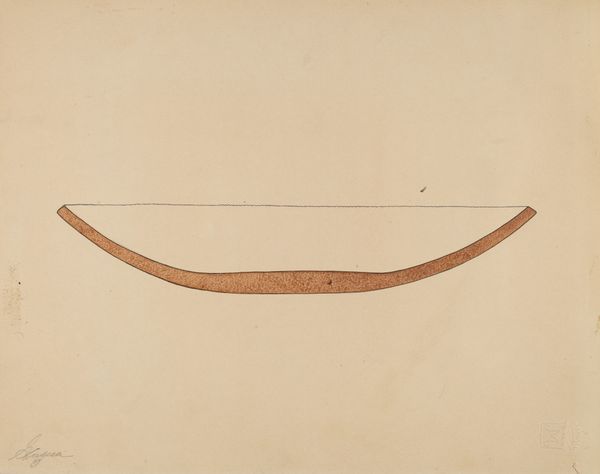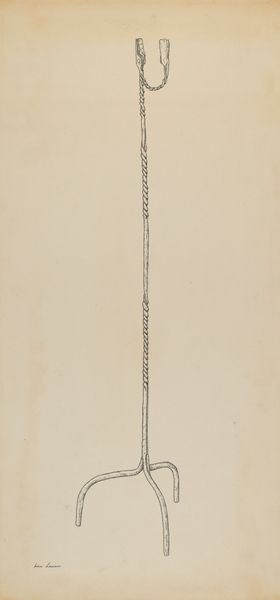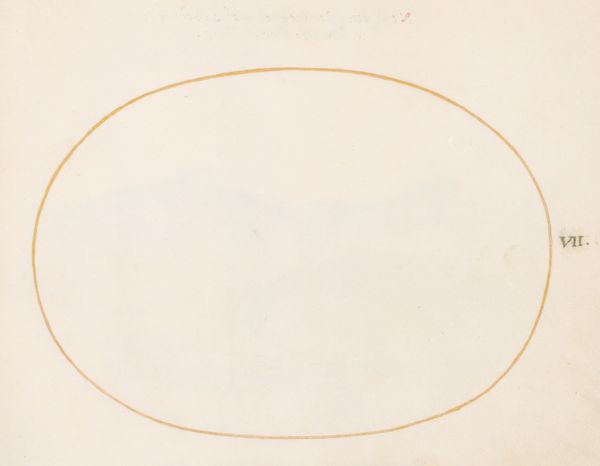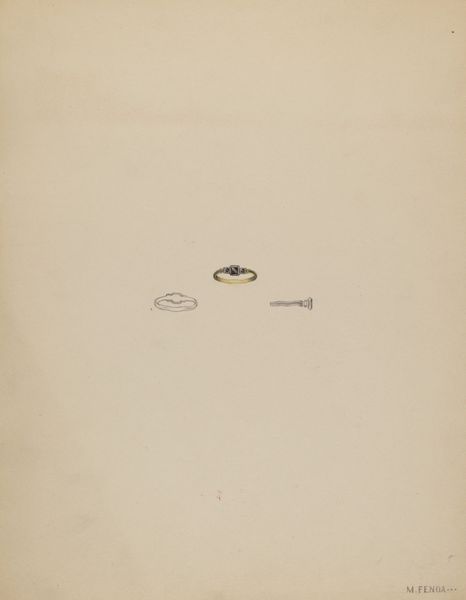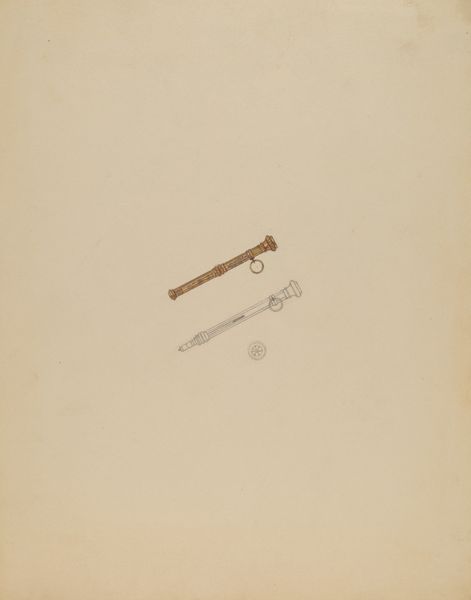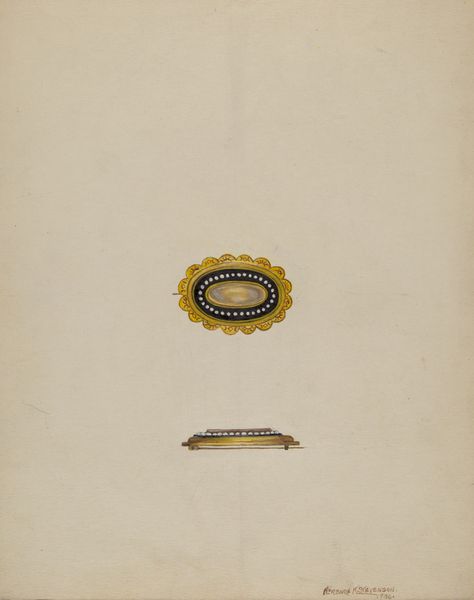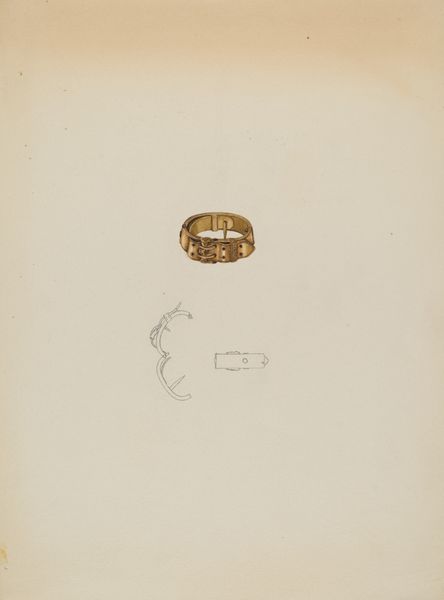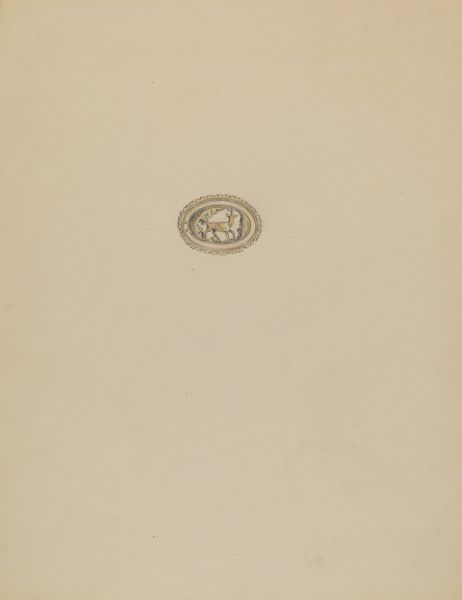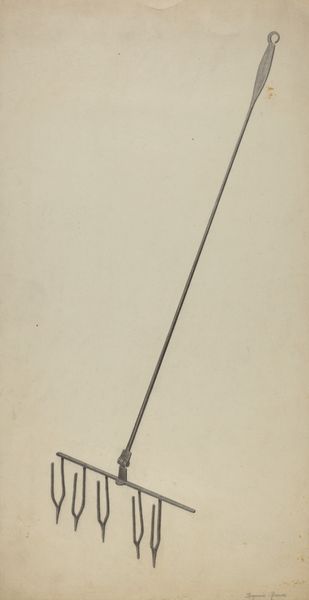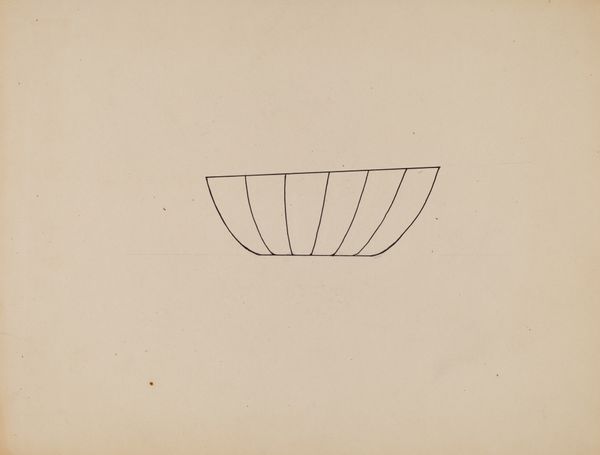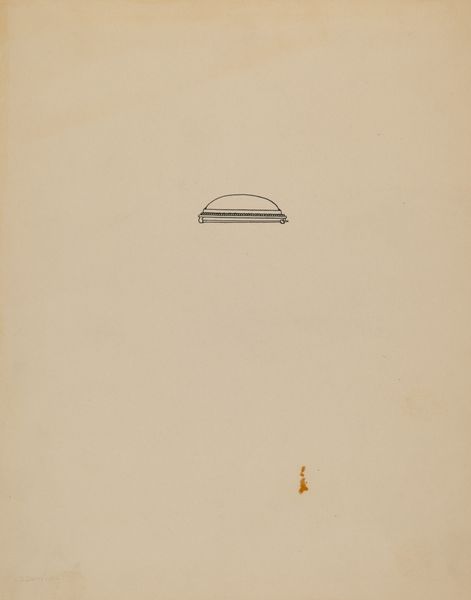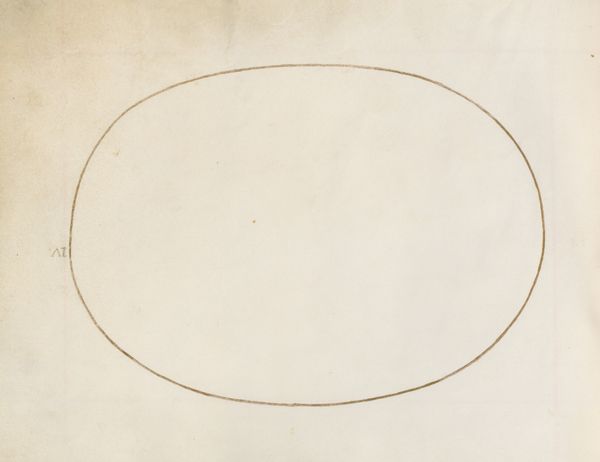
drawing, paper
#
drawing
#
paper
#
geometric
#
realism
Dimensions: overall: 28.7 x 22.8 cm (11 5/16 x 9 in.)
Copyright: National Gallery of Art: CC0 1.0
Curator: What immediately strikes you about this image of a necklace? It's a drawing on paper by Michael Fenga, made around 1937. Editor: Oh, it's deceptively simple, isn't it? A minimalist's jewelry box. But there’s also a stillness about it, like a paused breath, or maybe just lost glamor. Is it the empty space, or maybe the color that is too close to the paper... that almost feels faded in real life too? Curator: I think that sense of stillness speaks to the art deco influence and, indeed, its relationship with modernism, but through an accessible approach. This era celebrated mass production and machine aesthetics, yet sought ways to retain individuality. Drawing jewelry designs, was an intimate enterprise during those politically intense years. It shows the connection between fine art and commercial design. Editor: Intimate is a good word. It does feel like peering into someone's private thoughts, their aspirations. I imagine it sparkling, brought to life on somebody’s skin, moving… What were people wearing jewelry for back then anyway? Beyond status symbols, or, you know, just accessorizing. Curator: Oh, absolutely! Think of cinema and photography then: jewellery design and its graphic representation, like this artwork, promoted cultural aspirations about the “good life”. Jewelry embodied progress, with streamlined forms and bold geometry influencing how women perceived their own evolving role. There are complex relationships happening within the space of an everyday necklace! Editor: Hmmm... You’ve given me a thought: what if this necklace, perfectly simple in gold-yellow tones, becomes a talisman? In it lies the power of aspiration but it represents quiet optimism during uncertain times. The paper feels almost fragile, like it holds more weight that one thinks when looked at! I guess, in a way it makes you wonder: Who dreamed it up and who wore it? What became of her? Curator: Well, perhaps by contemplating those questions, we connect with those aspirations too. In any case, I invite listeners to explore those personal links of artistic design to social realities. Editor: Right, but whether you see history, dreams, or plain optimism here, come take a closer look anyway! I dare you!
Comments
No comments
Be the first to comment and join the conversation on the ultimate creative platform.
